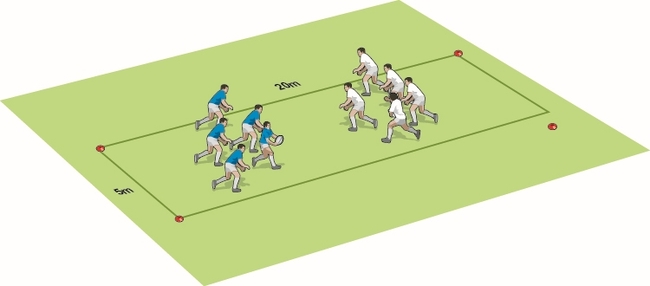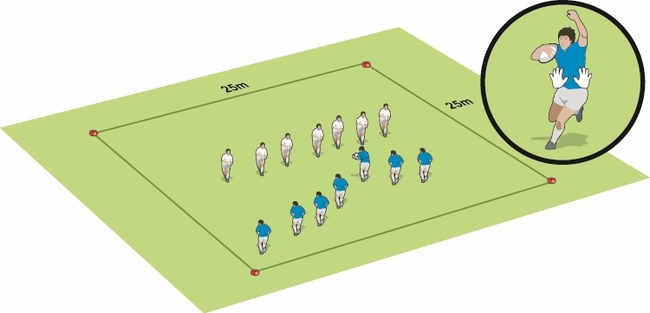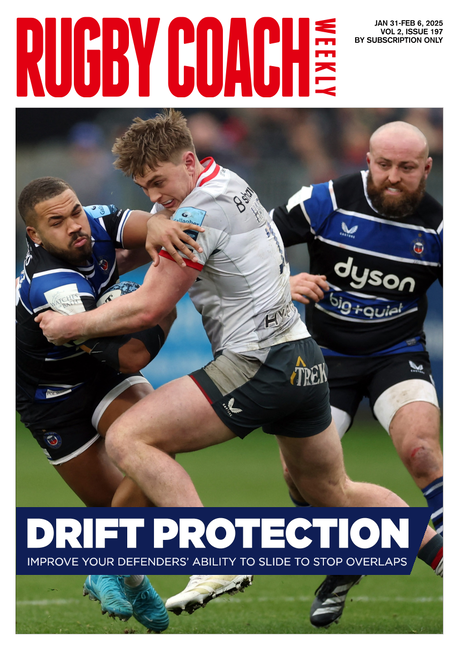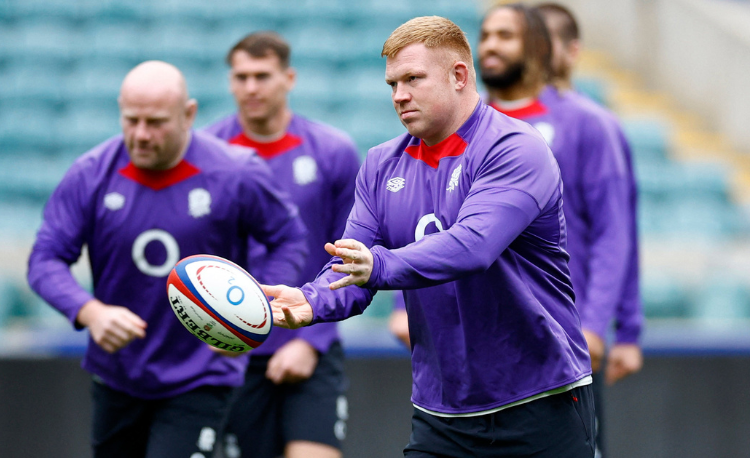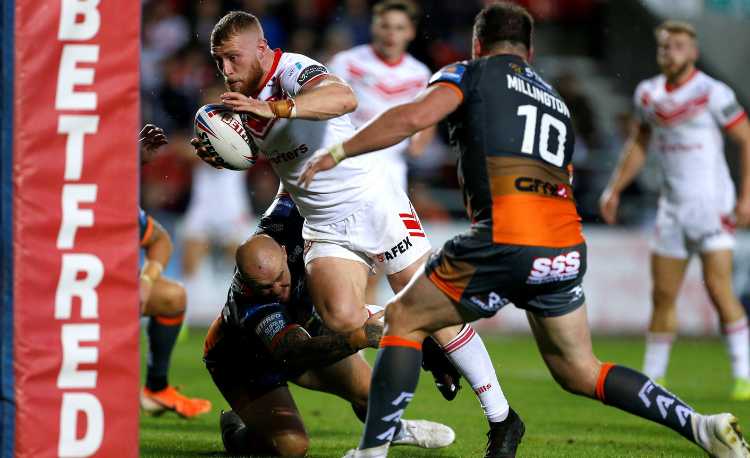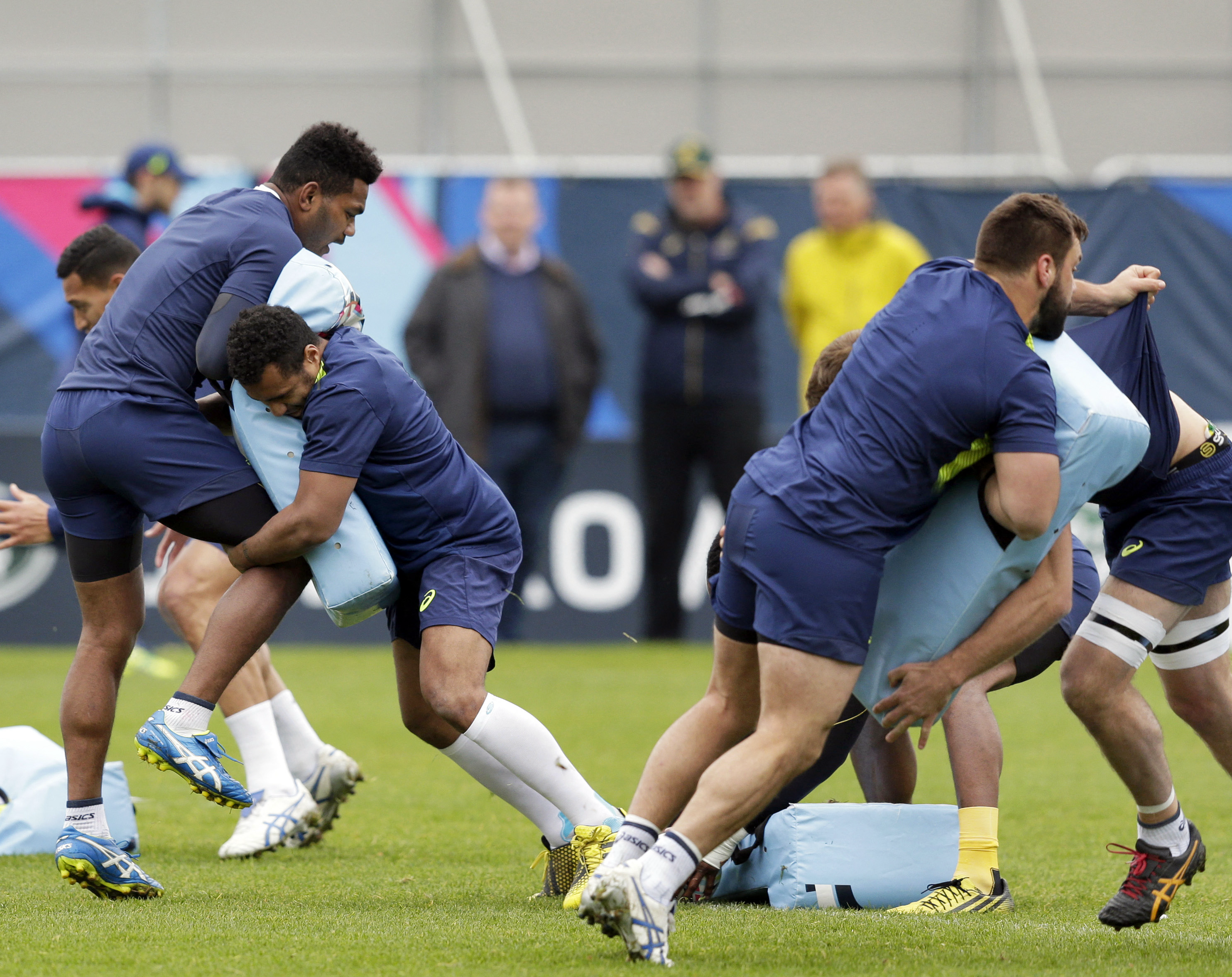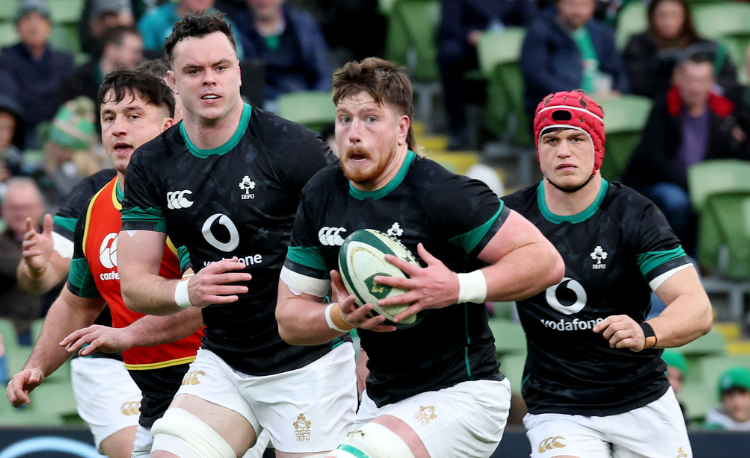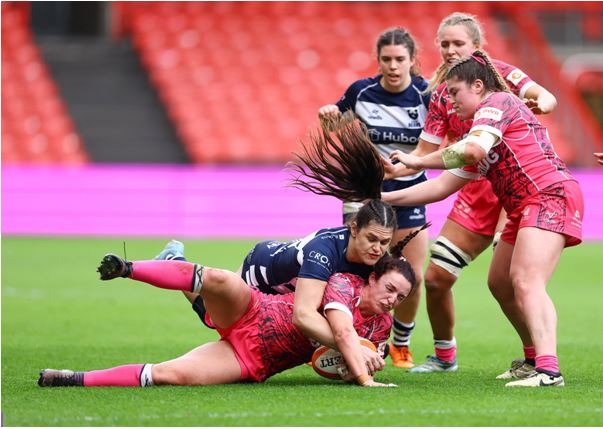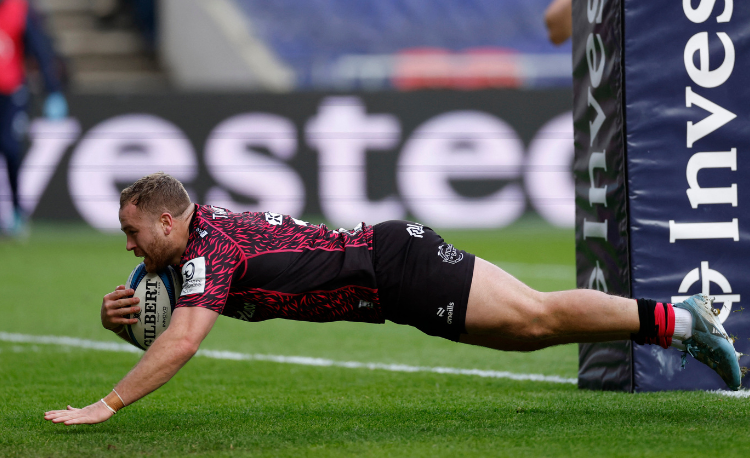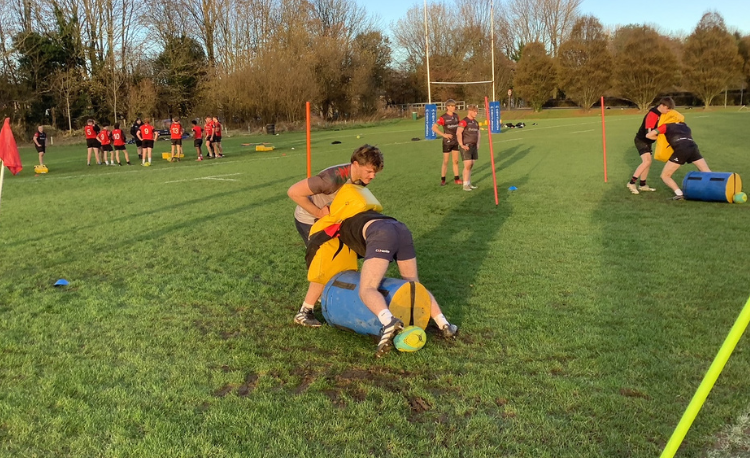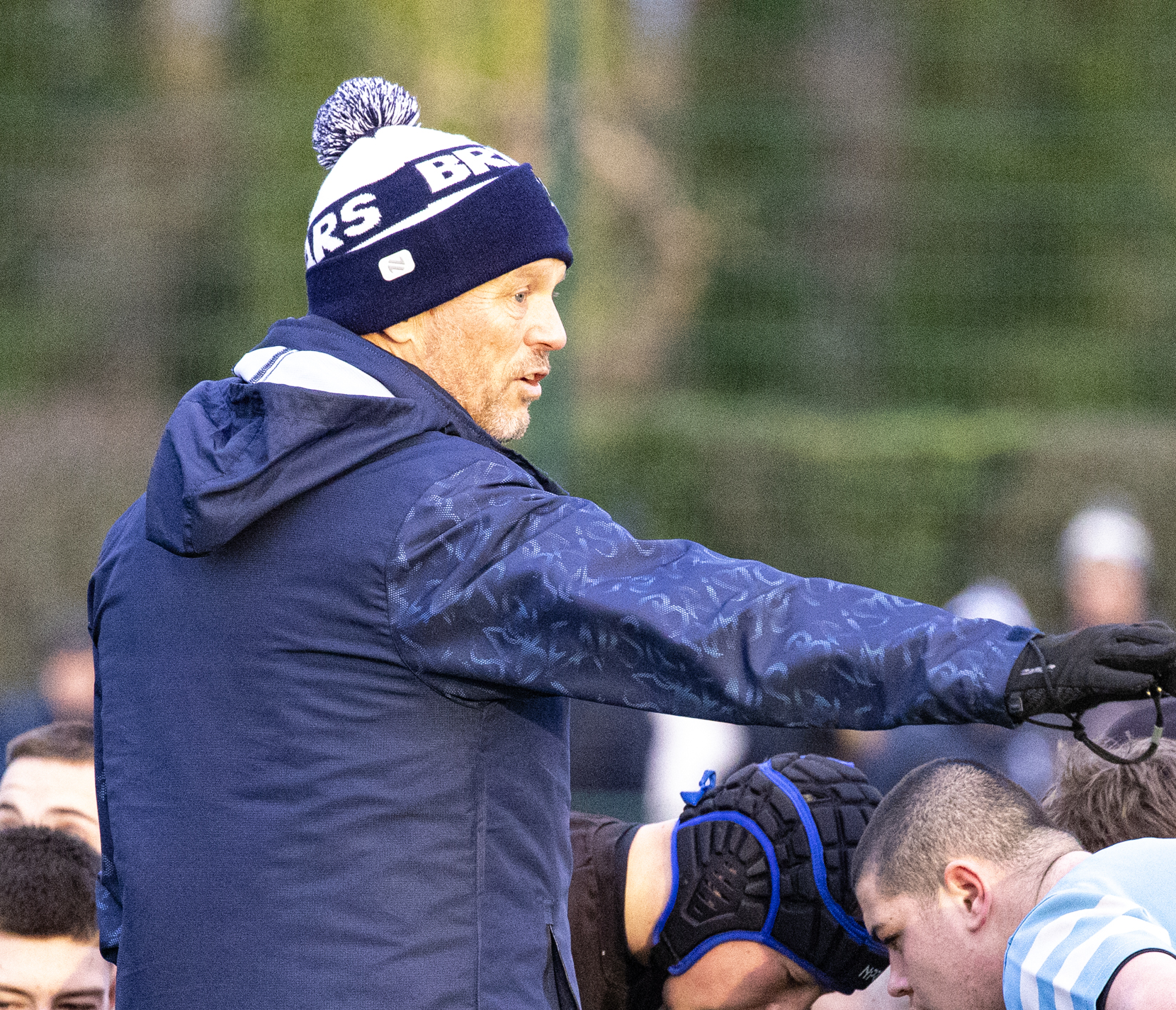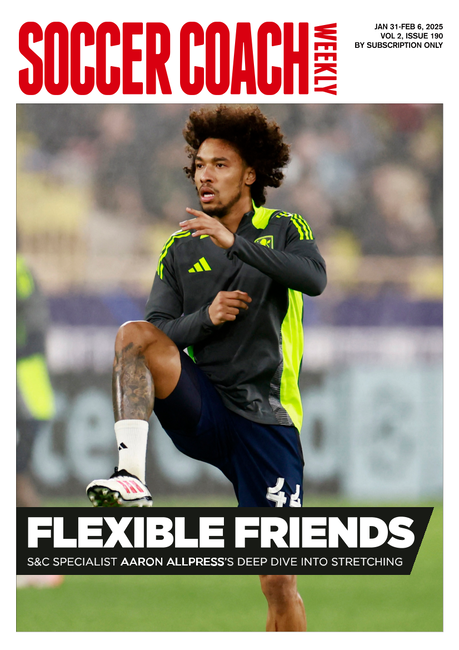Andy Farrell on what makes good coaches outstanding
Andy Farrell says that he played best for the coaches who cared about the team. He reveals why that matters and how to shape your training to increase intensity.

“It doesn’t matter whether you are coaching internationals or grassroots players, the principles of coaching will stay the same.” So says Andy Farrell, Ireland's head coach. “Success comes from players being able to master the skills and apply them under pressure, and that’s where our focus is in training.”
Farrell draws inspiration for this view from his time as a player. He enjoyed an outstanding career in rugby league as one of the best kicking loose forwards in the world game. After league he played union for England and Saracens. He subsequently switched over to coaching, first with Saracens, then England in 2012 before moving to Ireland national team, heading up the team after the 2020 World Cup.
“For me, it wasn’t about whether the coach was the best technically or tactically”, says Andy, “but how he made you feel”. He remembers when he was a kid playing club rugby how his coach, Hayden Walker, decided to buy a minibus.
“Since the parents were often at work, he would start at 4pm and drive around picking up all the players so they were able to train at six. He really cared for us, and so we repaid his faith by the way we performed.
“When I went to Wigan senior club, the A team coach was an ex-player called Graeme West. He still played, even though he was in his 40s, because he wanted to look after the youngsters. A few years later he went on to be the first team coach and we won five trophies within a year.”
This sort of devotion means players happily work on improving their game outside normal training, seeking advice and listening to feedback. “The team is a reflection of you as a coach. Players want to play for a coach who cares about them.”
KEY POINTS
The top teams want to create intensity on the training pitch and they do this using the whole-part-whole approach, something Andy thoroughly believes in.
“I use lots of small-sided games or situations with the players. I see it as an essential part of challenging the players to see if the players have got it in the first place.”
“My coaching team do a lot of off-the-field coaching. We will go through the technical aspects in small drills before we get on to the pitch. That means we can put the players under pressure to perform in match-like scenarios as a group.”

“The games help us see where the players are in terms of skills. We can then break this down, work on improving those skills and then put them back into a game to see if they stick.”
But, Farrell still needs to know more and will quiz the players after training. “Just because they’ve done it correctly, you cannot assume that they’ve understood how or why they’ve done it”.
Fault correction isn’t a big part of the full session. To retain the intensity, these faults will be dealt with in the review. “At this level, we will do a lot of our learning in the classroom. That means we say less on the field and concentrate more on creating pressure on the skills.”
“You need to be consistent and honest with them. Players respect you more if you tell them what they need to improve and if they have clear goals. That comes from working towards mastering the basics.”
It’s also refreshing to know that the best players are still working on the same basic techniques as grassroots players. “There’s no difference in the detail at any level of the game,” says Andy. “The top teams in the world are the masters of the basics. Your identity as a team is based upon what you’ve mastered.”
KEY POINTS
As coaches become better qualified, they will be running teams that need far more tactical direction.
Farrell has a word of warning. “It’s easy to watch the game on TV and think you can replicate that with your players. That’s a problem at all levels of the game as well. Before you even start to put in place a game plan and philosophy of how you want to play, you must understand what resources you have available.”
That means coaches should have a clear plan and one that the players all understand as well. “Again, it comes down to what your team can do, what they are capable of. It’s no good coming to training with a whole raft of ideas from the latest coaching camp you’ve been on if the players can’t do the simple things well.”
KEY POINTS
Many grassroots coaches come into the game because their son is involved in the team. It’s not often this happens at professional level, but unusually both Andy Farrell and Mike Ford have coached and selected their own sons.
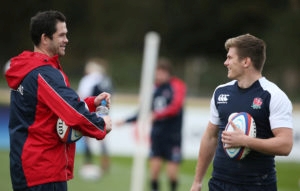
Farrell says: “I think the main danger comes from you making it a big issue when in fact it’s just part of being a coach. When you have your coaching hat on, you are just as harsh or as encouraging as you would be to any player. If your son is the best player, he needs praise. If he makes a mistake, you need to correct him, but not as you would if you were at home.”
“You must have a level head, because the team is a reflection of you.”
For more on a whole-part-whole approach...

WHAT THE BEST COACHES DO REALLY WELL
“It doesn’t matter whether you are coaching internationals or grassroots players, the principles of coaching will stay the same.” So says Andy Farrell, Ireland's head coach. “Success comes from players being able to master the skills and apply them under pressure, and that’s where our focus is in training.”
Farrell draws inspiration for this view from his time as a player. He enjoyed an outstanding career in rugby league as one of the best kicking loose forwards in the world game. After league he played union for England and Saracens. He subsequently switched over to coaching, first with Saracens, then England in 2012 before moving to Ireland national team, heading up the team after the 2020 World Cup.
“For me, it wasn’t about whether the coach was the best technically or tactically”, says Andy, “but how he made you feel”. He remembers when he was a kid playing club rugby how his coach, Hayden Walker, decided to buy a minibus.
“Since the parents were often at work, he would start at 4pm and drive around picking up all the players so they were able to train at six. He really cared for us, and so we repaid his faith by the way we performed.
“When I went to Wigan senior club, the A team coach was an ex-player called Graeme West. He still played, even though he was in his 40s, because he wanted to look after the youngsters. A few years later he went on to be the first team coach and we won five trophies within a year.”
This sort of devotion means players happily work on improving their game outside normal training, seeking advice and listening to feedback. “The team is a reflection of you as a coach. Players want to play for a coach who cares about them.”
KEY POINTS
- Success comes from mastering the skills so you can apply them under pressure.
- The best coaches show they care for their players. That means the players will want to play for that coach.
- The team is a reflection of you as a coach.
SHAPE TRAINING TO IMPROVE PLAYERS
The top teams want to create intensity on the training pitch and they do this using the whole-part-whole approach, something Andy thoroughly believes in.
“I use lots of small-sided games or situations with the players. I see it as an essential part of challenging the players to see if the players have got it in the first place.”
“My coaching team do a lot of off-the-field coaching. We will go through the technical aspects in small drills before we get on to the pitch. That means we can put the players under pressure to perform in match-like scenarios as a group.”

“The games help us see where the players are in terms of skills. We can then break this down, work on improving those skills and then put them back into a game to see if they stick.”
But, Farrell still needs to know more and will quiz the players after training. “Just because they’ve done it correctly, you cannot assume that they’ve understood how or why they’ve done it”.
Fault correction isn’t a big part of the full session. To retain the intensity, these faults will be dealt with in the review. “At this level, we will do a lot of our learning in the classroom. That means we say less on the field and concentrate more on creating pressure on the skills.”
“You need to be consistent and honest with them. Players respect you more if you tell them what they need to improve and if they have clear goals. That comes from working towards mastering the basics.”
It’s also refreshing to know that the best players are still working on the same basic techniques as grassroots players. “There’s no difference in the detail at any level of the game,” says Andy. “The top teams in the world are the masters of the basics. Your identity as a team is based upon what you’ve mastered.”
KEY POINTS
- The top teams train intensely on the pitch.
- Challenge the players with small-sided games to see if they can perform the skill.
- Check the players have understood the skill even if they’ve performed it.
- The top teams are masters of the basics.
BE TACTICALLY ASTUTE
As coaches become better qualified, they will be running teams that need far more tactical direction.
Farrell has a word of warning. “It’s easy to watch the game on TV and think you can replicate that with your players. That’s a problem at all levels of the game as well. Before you even start to put in place a game plan and philosophy of how you want to play, you must understand what resources you have available.”
That means coaches should have a clear plan and one that the players all understand as well. “Again, it comes down to what your team can do, what they are capable of. It’s no good coming to training with a whole raft of ideas from the latest coaching camp you’ve been on if the players can’t do the simple things well.”
KEY POINTS
- You need know your team before you know what tactics to use.
- A team is defined by what it does well.
DON'T MAKE COACHING YOUR SON A BIG ISSUE FOR YOU OR FOR THEM
Many grassroots coaches come into the game because their son is involved in the team. It’s not often this happens at professional level, but unusually both Andy Farrell and Mike Ford have coached and selected their own sons.

Farrell says: “I think the main danger comes from you making it a big issue when in fact it’s just part of being a coach. When you have your coaching hat on, you are just as harsh or as encouraging as you would be to any player. If your son is the best player, he needs praise. If he makes a mistake, you need to correct him, but not as you would if you were at home.”
“You must have a level head, because the team is a reflection of you.”
For more on a whole-part-whole approach...
Newsletter Sign Up
Coaches Testimonials

Gerald Kearney, Downtown Las Vegas Soccer Club

Paul Butler, Florida, USA

Rick Shields, Springboro, USA

Tony Green, Pierrefonds Titans, Quebec, Canada
Subscribe Today
Be a more effective, more successful rugby coach
In a recent survey 89% of subscribers said Rugby Coach Weekly makes them more confident, 91% said Rugby Coach Weekly makes them a more effective coach and 93% said Rugby Coach Weekly makes them more inspired.
Get Weekly Inspiration
All the latest techniques and approaches
Rugby Coach Weekly offers proven and easy to use rugby drills, coaching sessions, practice plans, small-sided games, warm-ups, training tips and advice.
We've been at the cutting edge of rugby coaching since we launched in 2005, creating resources for the grassroots youth coach, following best practice from around the world and insights from the professional game.
